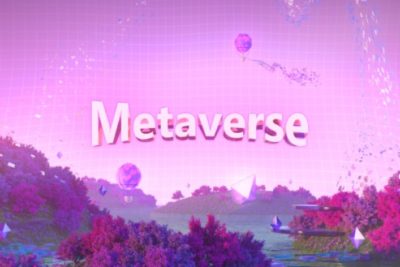
In October 2021, Meta shared a video on YouTube entitled “The Metaverse and How We’ll Build It Together — Connect 2021”.[1] Around this time, the company also announced its rebranding from Facebook to Meta.[2] The new company name seemingly signifies its focus on building the Metaverse. In the said video, Mark Zuckerberg refers to “an embodied internet”, and explains, in essence, that the Metaverse is basically about building greater experience and presence in the virtual world, as opposed to merely looking at a screen. Although the Metaverse and its dynamics are currently still a novel concept to many of us, it is extremely topical at the moment. Despite being in its developmental stages, the rapidly increasing emergence of the Metaverse is very much a reality.
The swift development of the Metaverse, and its accompanying challenges and opportunities, have already been demonstrated in the field of intellectual property law. Whilst the development of the Metaverse is provoking peculiar and unprecedented questions in the context of intellectual property law at large, it is simultaneously creating great excitement in trade mark law.
The Metaverse is essentially providing existing and prospective traders with a new platform for trading. Accordingly, to catch the wave early on, multiple traders have already responded by filing trade marks for goods and services to be traded in the Metaverse. From the website of the United States Patents and Trademark Office, it is evident that numerous trade marks related to goods and services intended for use and enjoyment in the Metaverse have been filed in recent months and weeks. Many well-known global brands have either led the way or followed suit, including, inter alia, Nike, Clinique, Gucci, McDonald’s and Red Bull. From the South African Trade Mark Register it is evident that Meta filed various relevant trade marks, namely – “Meta”, “Meta Portal” and “Meta Quest”.
Since the development of goods and services for use and enjoyment in the Metaverse is increasingly gaining momentum, it is anticipated that even more trade marks, for use in relation to these goods and services, will be filed in the foreseeable future. From the outset, the filing of trade marks for goods and services in the Metaverse begs the question – do the normal rules of trade marks apply? In short and at present, the answer is, for the most part, affirmative.
In future, however, the position may change. In this regard, with reference to the territory in which trade mark applications should be filed, a new approach may have to be considered. Generally, trade marks should be filed in the territory which they are to be used. However, since the Metaverse is so global, the lines seem blurred, and consideration may be given to filing trade marks in the territory where the consumer of the virtual goods or services is located. Be that as it may, since different Metaverses will eventually enter the virtual world, a question that arises is, what steps can Metaverses take to circumvent trade mark infringement? Ideally, a Metaverse should take steps and could, for example, request proof of registration of a trade mark for use in relation to goods and services to be traded in the virtual world. Metaverses could even go as far as to create a virtual trade mark register for that particular Metaverse and require trade mark protection in that particular Metaverse before allowing a trader to trade in relation to such goods or services in that Metaverse. Unlikely, possibly, but not impossible?
In terms of classification, trade marks are generally filed in the classes to which the goods and services of interest are allocated, in accordance with the Nice Classification. Accordingly, in the context of the Metaverse, the precise nature of the goods and service will inform the classification. The classification of service marks, in this context, is seemingly more straightforward than the classification of product marks. International trends seem to suggest that service marks should, at least, be registered in class 09, covering “downloadable virtual goods or services, namely computer programs for use in online virtual worlds” and class 41, covering “entertainment services, namely providing on-line virtual goods or services for use in virtual environments created for entertainment”.
The classification of virtual goods only to be used in the Metaverse is currently more complex. Will a trade mark, intended for use in relation to goods only in the Metaverse, be registered in class 09 only or, additionally, in the class in which the physical product is to be registered? Moreover, will existing trade mark protection for goods in, for example, class 25, covering “clothing” only, be sufficient to prevent other traders from using the same, or a confusingly similar trade mark, in relation to virtual clothing in the Metaverse? Given the blurred lines, what justifies consideration, in this context, is the addition of a new class, specifically dedicated to virtual goods, to the Nice Classification. If, however, the Nice Classification is not augmented to specifically accommodate virtual goods intended for the Metaverse, the most prudent approach, for the time being, would be for trade mark proprietors to ensure that they not only secure trade mark protection in the classes ordinarily of interest to them, covering the particular goods ordinarily of interest, but also in class 09. This would, of course, assist trade mark owners to preclude other traders from using the trade mark owner’s trade mark in the Metaverse in relation to virtual goods.
The emergence of the Metaverse necessitates vigilance and perceptiveness from existing and prospective traders. Nevertheless, it will be more ideal for traders to jump on the bandwagon en route to the Metaverse, rather than to miss an opportunity to gain or maintain a competitive advantage.
[1] Meta 2021 https://youtu.be/PEuVYs9qLpM
[2] Meta 2021 Introducing Meta – YouTube
Alicia van der Walt & Marcelle Samons
Partner | Trade Mark Attorney
